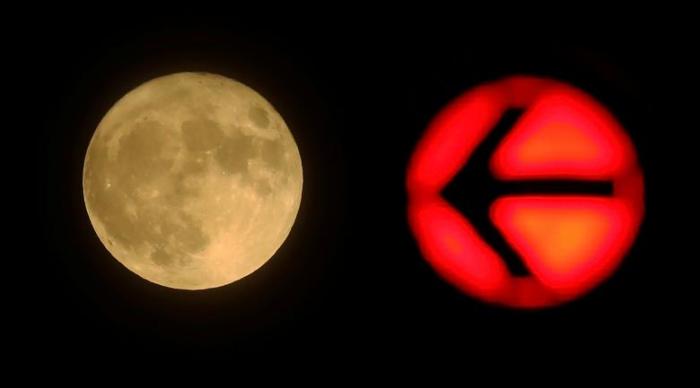Smaller Moons Collided and Merged Together to Form Our Moon?
The moon may be the most extensively studied planetary body, but scientists are yet to unravel the mystery behind its creation.

The creation of Earth's moon is being attributed to the merger of many moonlets which orbited the planet after multiple objects as big as Mars collided with Earth, a new study suggests.
"Our model suggests that the ancient Earth once hosted a series of moons, each one formed from a different collision with the proto-Earth," said co-author of the study, Prof. Hagai Perets of the Technion - Israel Institute of Technology.
The findings of the study conflict with earlier theories behind the moon's creation, especially the "Giant Impact Hypothesis" which is most widely accepted.
The older hypothesis proposes that Earth's moon was created when a Mars-sized celestial body known as Theia collided with the planet soon after its creation. The resultant collision threw vaporized chunks of the Earth's crust into space and the ejected material was bonded to form the moon under the planet's gravitational pull.
For this theory to be true, a significant portion of the moon would have to be made up of material from the mystery planet Theia. However, this is not the case and analysis of lunar soil and rock samples collected in the 60s and 70s by the Apollo missions have demonstrated that the composition of the moon is exceedingly similar to that of Earth.
The recently published study explains this anomaly with a new multiple-impact hypothesis. The researchers theorize that about 20 moon- to Mars-sized celestial objects struck Earth over long durations. These impacts ejected debris out into space which formed several disks around the planet similar to Saturn's rings. Under Earth's gravitational pull, the debris compacted into multiple moonlets which over time coalesced to form the one moon that exists today.
"The multiple-impact scenario is a more natural way of explaining the formation of the moon," Raluca Rufu, a researcher at the Weizmann Institute of Science in Israel and lead author of the study, told Space.com. "In the early stages of the solar system, impacts were very abundant; therefore, it is more natural that several common impactors formed the moon, rather than one special one."
The Israeli researchers behind the study, which was published in the Nature Geoscience journal on Jan. 9, ran 800 simulations of planetary-collisions with Earth to check the conditions needed to form such moonlets. Further research into the multiple-impact hypothesis is already underway with Prof. Perets working to determine the efficiency of moonlet mergers.





























